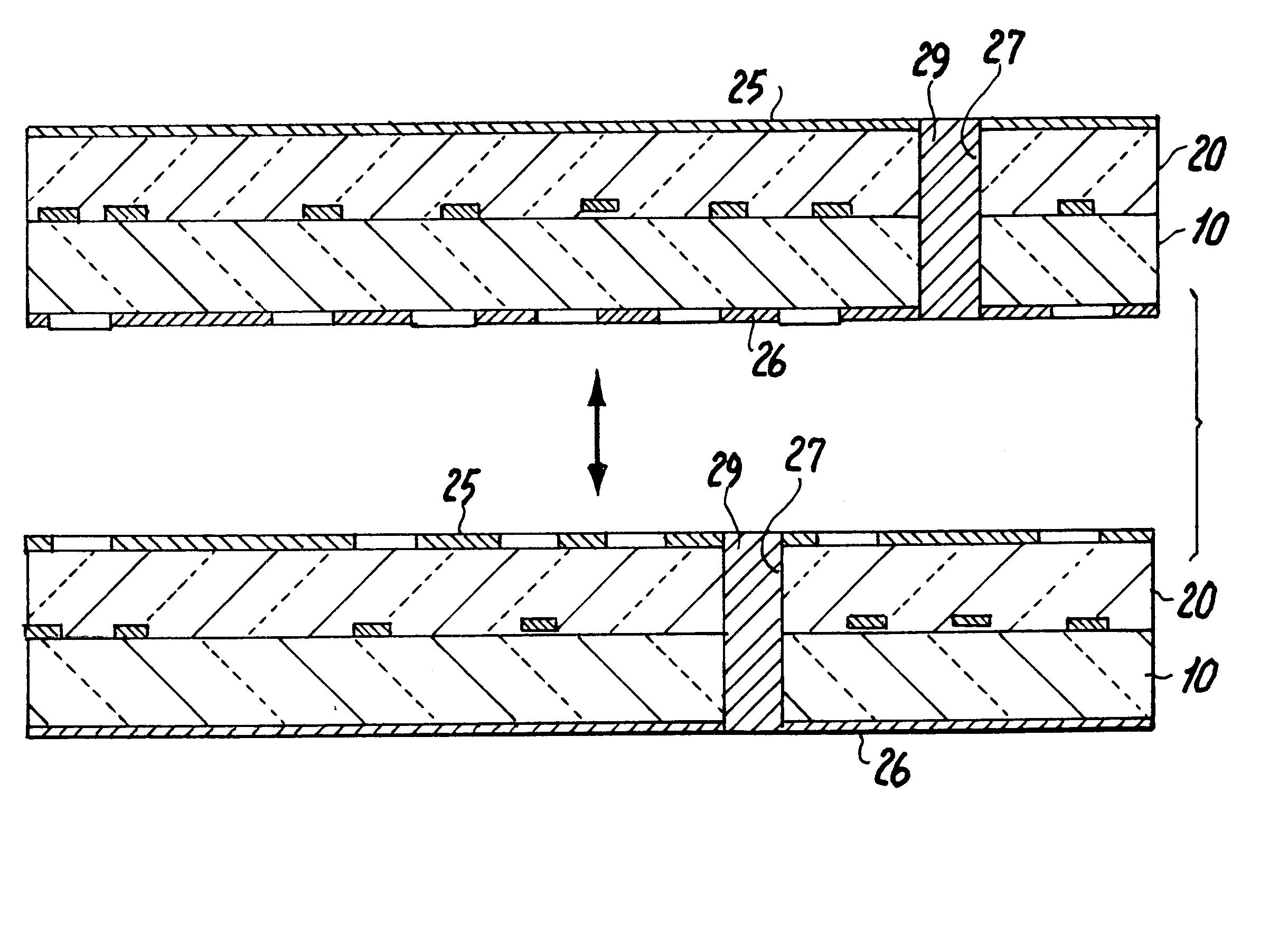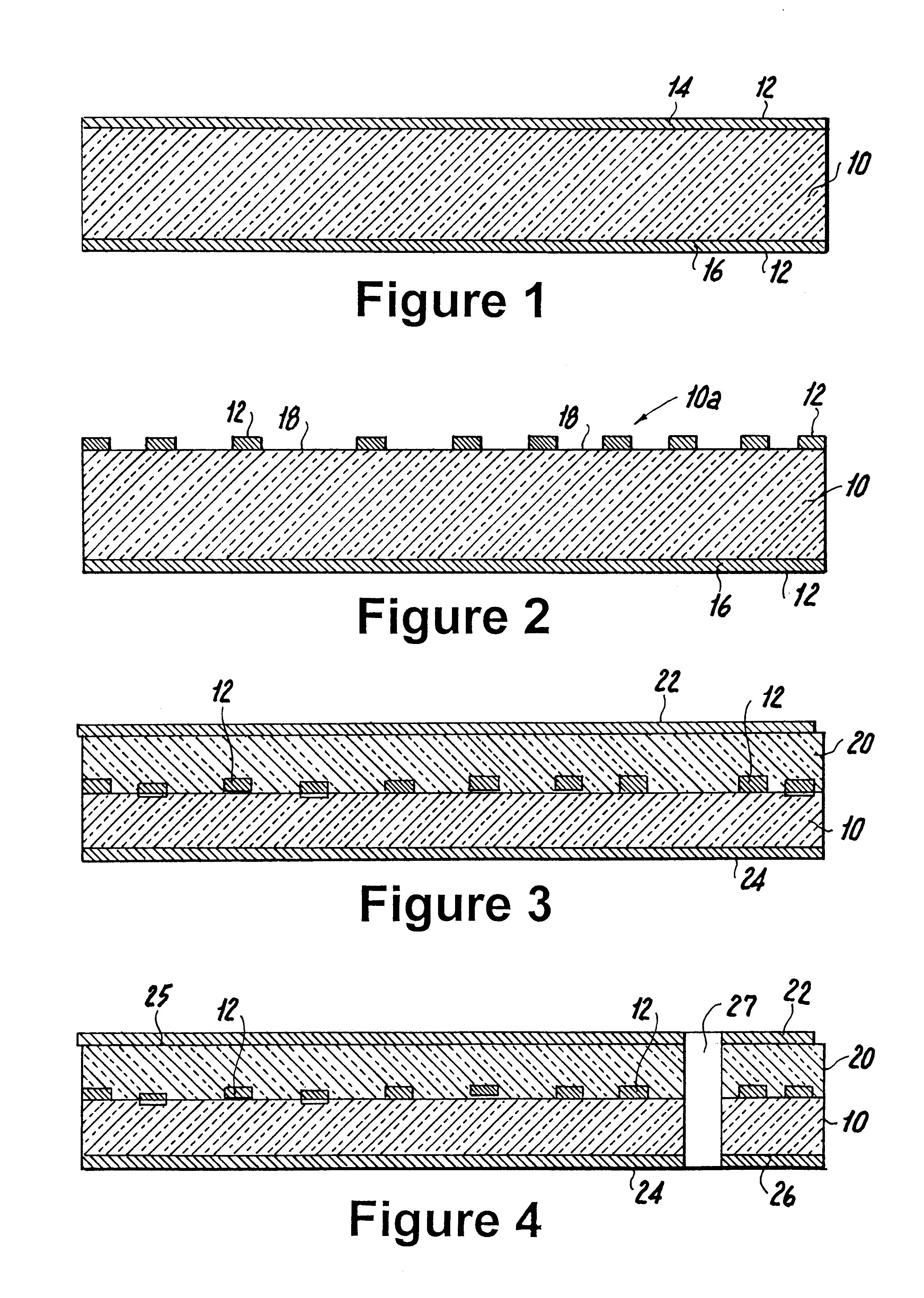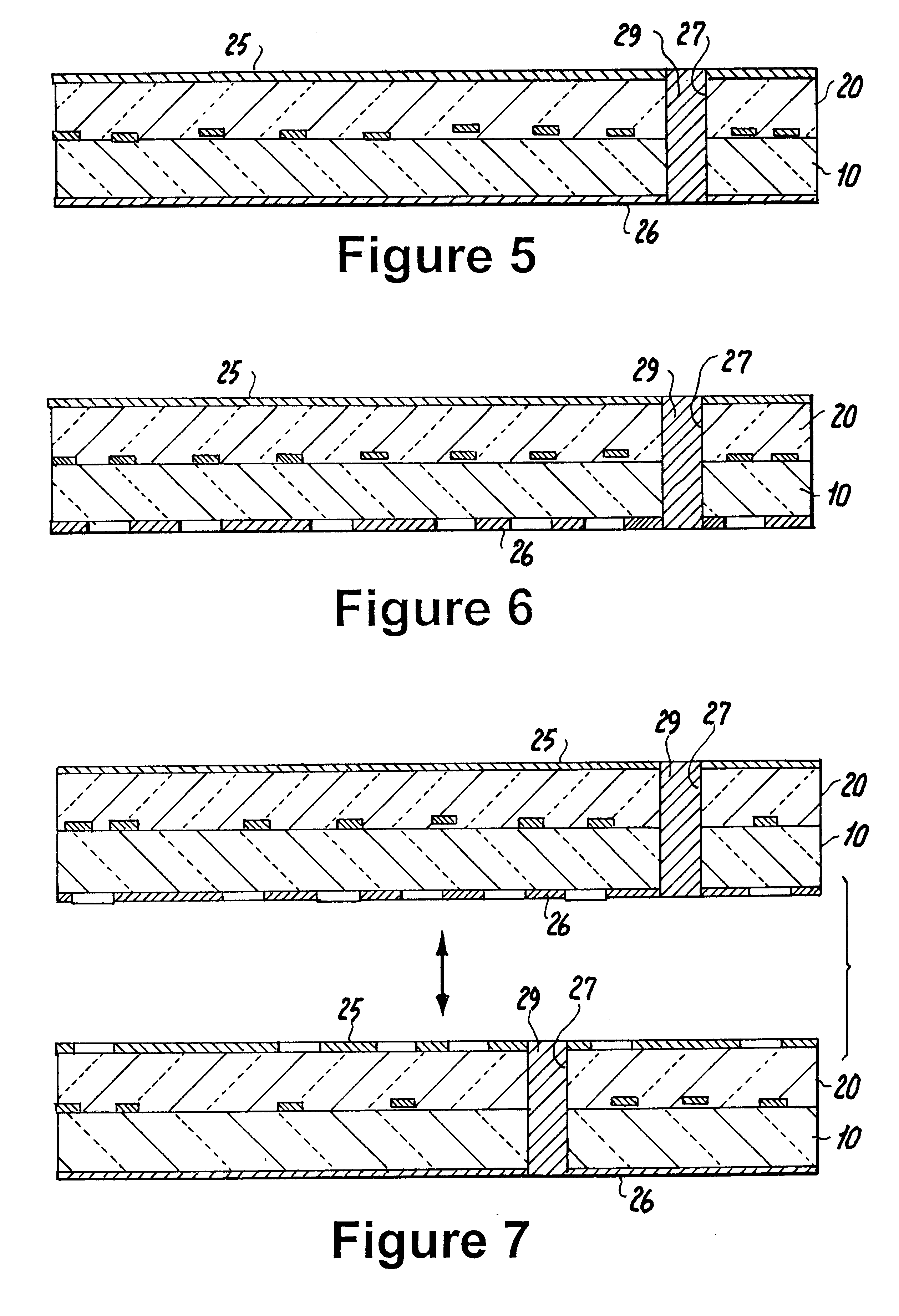Structure for high speed printed wiring boards with multiple differential impedance-controlled layer
a technology of impedance control layer and structure, applied in the direction of printed element electric connection formation, high frequency circuit adaptation, etching metal masks, etc., can solve the problem that none of these addresses themselves directly to solving the problem
- Summary
- Abstract
- Description
- Claims
- Application Information
AI Technical Summary
Benefits of technology
Problems solved by technology
Method used
Image
Examples
Embodiment Construction
Referring in more specific detail to the drawings, particularly, FIG. 1 illustrates a section of a dielectric substrate 10 for a printed wiring board having a thickness of copper foil material 12 applied on both sides or surfaces 14, 16 thereof, in an initial step of producing the impedance controlled printed wiring board structure. Although two conductive layers and one dielectric layer are shown for base member 10, it is understood that the invention is not limited thereto. Specifically, it is only necessary to provide one such conductive layer and one such dielectric layer while still attaining the advantageous results taught herein. At least two layers of each are used when it is desired to incorporate an internal conductive plane (e.g., power, ground or signal) as part of the final structure. Understandably, several conductive dielectric layers and corresponding internal conductive planes may be utilized, depending on operational requirements for the finished product. Subsequen...
PUM
| Property | Measurement | Unit |
|---|---|---|
| aspect ratio | aaaaa | aaaaa |
| impedance | aaaaa | aaaaa |
| thickness | aaaaa | aaaaa |
Abstract
Description
Claims
Application Information
 Login to View More
Login to View More - R&D
- Intellectual Property
- Life Sciences
- Materials
- Tech Scout
- Unparalleled Data Quality
- Higher Quality Content
- 60% Fewer Hallucinations
Browse by: Latest US Patents, China's latest patents, Technical Efficacy Thesaurus, Application Domain, Technology Topic, Popular Technical Reports.
© 2025 PatSnap. All rights reserved.Legal|Privacy policy|Modern Slavery Act Transparency Statement|Sitemap|About US| Contact US: help@patsnap.com



